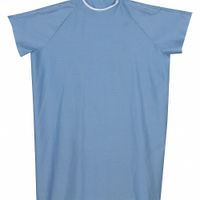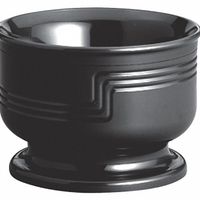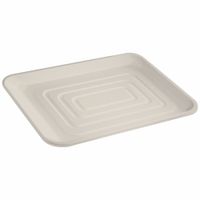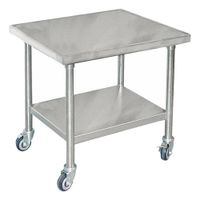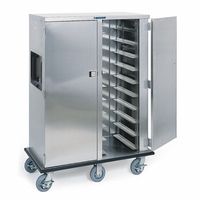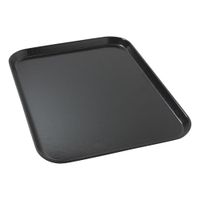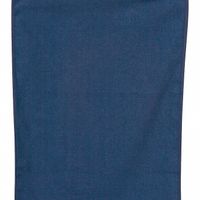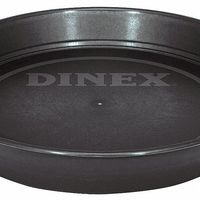Call +(254) 703 030 000 / 751 483 999 / 721 704 777
- Home
- Furnishings Appliances Hospitality
- Tableware Smallwares Food Service Storage Transport
- Meal Delivery Service Equipment For Institutions
Frequently Asked Questions
What are the benefits of using meal delivery carts in healthcare facilities?
Meal delivery carts in healthcare facilities offer numerous benefits, enhancing both operational efficiency and patient care. Firstly, they ensure timely and organized meal distribution, which is crucial for maintaining patients' nutritional schedules and dietary needs. This efficiency reduces the workload on healthcare staff, allowing them to focus more on patient care rather than logistical tasks.
Secondly, these carts are designed to maintain the temperature of the food, ensuring that meals are served hot or cold as required. This is vital for patient satisfaction and adherence to dietary requirements, as temperature can affect both the taste and nutritional value of food.
Additionally, meal delivery carts improve hygiene and safety. They are often equipped with compartments and covers that protect food from contamination during transport. This is particularly important in healthcare settings where patients may have compromised immune systems.
The use of meal delivery carts also enhances the personalization of patient care. They can be customized to accommodate specific dietary restrictions and preferences, ensuring that each patient receives the appropriate meal. This personalization can lead to improved patient satisfaction and better health outcomes.
Moreover, these carts contribute to operational cost savings. By streamlining the meal delivery process, they reduce the need for additional staff and minimize food waste through more accurate meal distribution.
Finally, meal delivery carts can improve the overall workflow within a healthcare facility. By standardizing the meal delivery process, they help in reducing errors and improving communication between the kitchen and nursing staff, leading to a more coordinated and efficient operation.
How do meal trays for institutions ensure food safety and temperature control?
Meal trays for institutions ensure food safety and temperature control through several key methods:
1. **Material and Design**: Trays are often made from materials like stainless steel or high-quality plastics that are durable and easy to clean. They are designed with compartments to separate different food items, preventing cross-contamination.
2. **Insulation**: Many trays are insulated to maintain the temperature of hot and cold foods. Insulated lids and bases help keep hot foods above 140°F (60°C) and cold foods below 40°F (4°C), reducing the risk of bacterial growth.
3. **Temperature Monitoring**: Some trays come with built-in temperature indicators or are used in conjunction with temperature monitoring systems to ensure food remains within safe temperature ranges during transport and service.
4. **Sealing and Covers**: Tight-fitting lids and covers help maintain temperature and protect food from contaminants. Some trays use vacuum seals or snap-on lids to enhance this protection.
5. **Portion Control**: Trays are designed to hold specific portions, which helps in maintaining consistent cooking and reheating times, ensuring food reaches safe temperatures.
6. **Transport Systems**: Trays are often part of a larger system that includes heated or cooled carts for transport. These systems are designed to maintain temperature from the kitchen to the point of service.
7. **Cleaning Protocols**: Trays are designed for easy cleaning and sanitization, often being dishwasher safe. Regular cleaning protocols are essential to prevent contamination.
8. **Regulatory Compliance**: Trays and their use are often subject to health and safety regulations, ensuring they meet standards for food safety and temperature control.
These methods collectively ensure that meal trays in institutional settings maintain food safety and proper temperature control from preparation to consumption.
What materials are commonly used for healthcare tableware?
Common materials used for healthcare tableware include:
1. **Stainless Steel**: Known for its durability, corrosion resistance, and ease of sterilization, stainless steel is often used for cutlery and trays in healthcare settings.
2. **Melamine**: This durable, lightweight, and shatter-resistant plastic is frequently used for plates, bowls, and cups. It can withstand high temperatures and is dishwasher safe, making it suitable for repeated use in healthcare environments.
3. **Polycarbonate**: A strong, impact-resistant plastic, polycarbonate is used for cups and plates. It is clear, allowing for easy content visibility, and is also dishwasher safe.
4. **Polypropylene**: This plastic is lightweight, durable, and resistant to chemicals and heat. It is often used for disposable or reusable tableware, including plates, bowls, and cutlery.
5. **Glass**: While less common due to breakage risk, tempered glass is sometimes used for its non-porous surface, which resists bacteria and odors. It is easy to clean and can be sterilized.
6. **Ceramic**: Used occasionally for its aesthetic appeal and non-reactive surface, ceramic is more common in non-critical areas of healthcare facilities.
7. **Biodegradable Materials**: Increasingly, healthcare facilities are using biodegradable options like bamboo or cornstarch-based products for disposable tableware to reduce environmental impact.
8. **Silicone**: Used for its flexibility and heat resistance, silicone is often found in lids and seals for containers.
These materials are chosen based on their ability to withstand rigorous cleaning, their safety for patients, and their compliance with health regulations.
How do pellet underliners, bases, and domes work to keep meals warm?
Pellet underliners, bases, and domes are components of a meal delivery system designed to maintain food temperature, ensuring meals remain warm from kitchen to table.
1. **Pellet Underliners**: These are typically made of metal or a heat-retentive material. Before use, they are heated in a special heating unit. Once heated, the pellet underliner is placed beneath the plate or tray holding the food. The heat from the pellet is transferred to the plate, maintaining the temperature of the food above it. The underliner acts as a thermal mass, slowly releasing stored heat over time.
2. **Bases**: The base is the component that holds the plate or tray. It is often insulated to minimize heat loss. The base works in conjunction with the pellet underliner by providing a stable platform that helps in evenly distributing the heat across the plate. The insulation in the base reduces heat transfer to the surrounding environment, ensuring that more heat is retained within the system.
3. **Domes**: The dome is a cover placed over the plate or tray. It is usually made of an insulating material and is designed to trap heat and moisture. By covering the food, the dome creates a micro-environment that reduces heat loss through convection and radiation. It also helps in retaining moisture, preventing the food from drying out. The dome's design ensures that the heat from the pellet and base is effectively utilized to keep the food warm.
Together, these components create a synergistic system that maximizes heat retention, ensuring meals remain at an optimal temperature for consumption. This system is particularly useful in settings like hospitals and hotels, where food needs to be transported over distances while maintaining its warmth and quality.
What is the purpose of induction charger stands in meal service?
Induction charger stands in meal service primarily serve the purpose of enhancing the dining experience by integrating technology with convenience. These stands are designed to wirelessly charge electronic devices such as smartphones and tablets, ensuring that guests can keep their devices powered without the need for cumbersome cables or searching for power outlets. This is particularly beneficial in settings like restaurants, cafes, and hotels where patrons may spend extended periods and rely on their devices for communication, work, or entertainment.
In addition to providing a practical charging solution, induction charger stands can contribute to a more organized and aesthetically pleasing dining environment. By eliminating the clutter of wires and chargers, these stands help maintain a clean and tidy table setting, which can enhance the overall ambiance of the dining area. This is especially important in upscale dining establishments where the focus is on providing a seamless and luxurious experience.
Moreover, induction charger stands can be integrated into the table design, offering a discreet and unobtrusive charging option that does not interfere with the meal service. This integration can also be a point of differentiation for businesses, showcasing their commitment to innovation and customer satisfaction.
From a business perspective, offering induction charging can increase customer satisfaction and loyalty, as it addresses a common need for device charging in public spaces. It can also encourage longer stays and increased spending, as guests are more likely to remain in the establishment if they can conveniently charge their devices.
Overall, induction charger stands in meal service enhance the customer experience by providing a modern, convenient, and aesthetically pleasing solution to device charging, aligning with the growing demand for technology integration in everyday life.
How are convalescent gowns designed for patient comfort and convenience?
Convalescent gowns are designed with patient comfort and convenience as primary considerations. They are typically made from soft, breathable materials such as cotton or polyester blends, which help maintain a comfortable body temperature and reduce skin irritation. The fabric is often lightweight and durable, allowing for ease of movement and long-term use.
The design of these gowns usually includes features that facilitate easy dressing and undressing, which is crucial for patients with limited mobility. They often have snap closures or ties at the back, shoulders, or sides, allowing healthcare providers to quickly and easily access the patient for medical examinations or treatments without causing discomfort or requiring the patient to move excessively.
For added convenience, convalescent gowns may include pockets for personal items, such as tissues or small medical devices, ensuring that patients can keep essential items close at hand. The gowns are typically designed to be loose-fitting, providing ample room for movement and accommodating medical equipment like IV lines or monitors.
Additionally, the gowns are often available in various sizes to fit different body types, ensuring that all patients can find a comfortable fit. Some designs also incorporate adjustable features, such as drawstrings or Velcro, to further customize the fit according to individual needs.
Overall, the design of convalescent gowns prioritizes patient dignity, comfort, and ease of use, making them an essential component of patient care in medical settings.
What features should be considered when choosing patient protectors and bibs?
When selecting patient protectors and bibs, consider the following features:
1. **Material**: Choose materials that are absorbent, waterproof, and comfortable. Common materials include cotton, polyester, and vinyl. Ensure the material is hypoallergenic to prevent skin irritation.
2. **Size and Coverage**: Ensure the bib provides adequate coverage to protect clothing from spills. Sizes should accommodate different body types and needs.
3. **Fastening Mechanism**: Look for adjustable and secure fastening options such as Velcro, snaps, or ties. This ensures a snug fit and ease of use for both patients and caregivers.
4. **Absorbency**: High absorbency is crucial to prevent liquids from seeping through. Multi-layered bibs often offer better protection.
5. **Waterproof Backing**: A waterproof layer prevents liquids from reaching clothing, providing an additional barrier.
6. **Ease of Cleaning**: Consider whether the bibs are machine washable or disposable. Reusable bibs should withstand frequent washing without degrading.
7. **Durability**: The bibs should be durable enough to withstand regular use and washing without tearing or losing effectiveness.
8. **Design and Aesthetics**: Some patients may prefer bibs with patterns or colors that are less clinical in appearance, promoting dignity and comfort.
9. **Cost**: Balance between cost-effectiveness and quality. While disposable bibs may be cheaper initially, reusable ones might offer better long-term value.
10. **Environmental Impact**: Consider eco-friendly options, especially if using disposable bibs, to minimize environmental impact.
11. **Safety**: Ensure there are no small parts or sharp edges that could pose a risk to patients.
12. **Brand Reputation**: Choose products from reputable brands known for quality and reliability in healthcare products.
